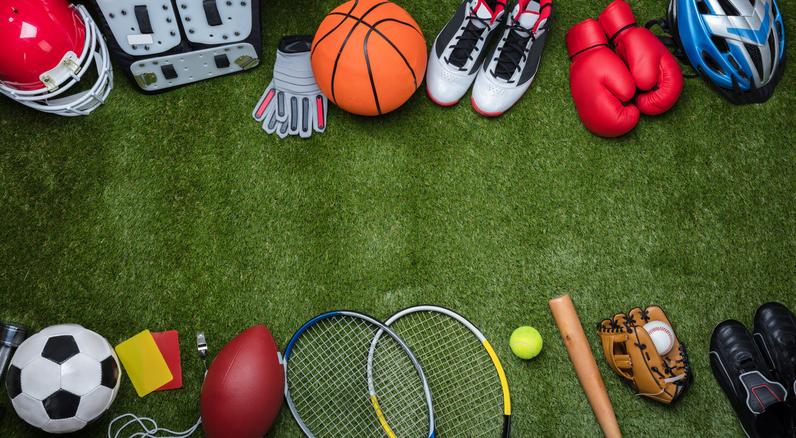It is no news that sports training involves pushing limits through creativity and a scientific understanding of human body performance. Harmonicode sport is an area of development that seeks to merge advance technology with athletic performance using harmonic principles which is very bound to change the existing norms in sports.
This blog will touch the various aspects of harmonicode sport including the foundation of science it rests on, how it can be applied in real life, and the success stories from the past.
What is Harmonicode Sport?
Within melodic mathematics and physics lies harmonicode sport, an invention that aims to optimize human capabilities through the use of technology and engineering. Logic says that an instrument needs to be finely tuned it needs to function properly and the human body is no different. It requires harmony at all ends from the movement and functions to deliver optimal performance.
With the help of advanced sensors and algorithms measuring motion patterns, biomechanics, energy expenditure, and other sophisticated analytics, athletes are able to achieve lower injury risks and improved performance. This shift in paradigm is computational enhancement targeting balance and precision.
The Science Behind Harmonicode Sport
Using frequency and rhythm, Harmonic principles analyze motion. For instance, take a look at a sprinter’s form. Their limbs naturally oscillate and there is a cadence to their movement. Even slight disruptions in this rhythm could lead to inefficiencies and, rather irreversibly, injuries. Dissonance can be identified and corrected through the movements analyzed by sport technology Harmonicode.
Key Technologies Enabling Harmonicode Sport
1. Wearable Sensors
Athletic performance “harmonic maps” are created through data collection related to muscle activation, bodily movement, and joint stress through the use of sensors worn by the athletes.
2. AI-Powered Motion Analysis
Feedback is provided through artificial intelligence evaluation of the data collected where they point out the areas marked for improvement like alignment of strides and energy use inefficiency.
3. Biomechanics Modeling
Guided by training and their recovery, predictive models simulating overall performance impacting adjustments through harmonics are able to gauge the effect on performance.
In contrast to traditional one-size-fits-all approaches to training, this strategy optimally aligns with an athlete’s individual biomechanical structure.
Practical Uses in Sports Training
The promise of harmonicode sport lies in its versatility. It does not restrict to a single discipline but applies across all athletic fields. Here are some of the areas where it is transforming sports training.
Injury Prevention:
Athletes get injured too, thanks to the repetitive strain or irregular movements they execute. In the case of harmonicode sport, sensors are used to pick-up the early stages of wear-and-tear, signified by a deviation from harmonic balance. For example:
• Harmonicode sport can help basketball players monitor knee stress during jumps to avert ligament damage.
• Long-distance runners can analyze cadence to avert overuse injuries like shin-splints.
Enhancing Technique:
Harmonicode sport is able to monitor motion patterns in real time, guaranteeing optimal methods are used best suited to maximize power and precision.
• Swimmers can alter their stroke frequency to allow smoother and more efficient propulsion.
• Tennis players can adjust their serve delivery to more consistent and powerful delivery.
Improving Energy Efficiency:
Harmonic optimization is aimed at reducing waste, thereby enabling athletes perform at their peak for longer periods of time.
• Cyclists for instance, can alter their pedaling cadence so that speed is increased while preserving available energy reserves.
Team Synergy in Group Sports
Consider team athletes, like soccer or basketball players. They can harmonize their training movements which is reflected on the cohesion on the ground. AI-powered harmonic analysis ensures that players sync their pacing and enhance their teamwork.
Success Stories in Harmonicode Sport
1. The Sprinter Who Beat His Limits
A professional sprinter was struggling with lowering his track time. After integrating harmonicode-based training with biomechanical sensors that pinpoint inefficiencies in a person’s arm swing and its momentum, he was able to complete the track in record time. During the sprint, he managed to set a personal record within three months of targeted optimization.
2. Revolutionizing Marathon Running
A rising star in marathon running utilized harmonicode sport to study her long distance stride rhythm. The analysis uncovered minute foot placement imbalances that threw off efficacy over time. Cutting her potential set up time post-marathon drastically reduced post-burnout fatigue.
3. Soccer Team’s Improved Synergy
A particular European soccer team has used harmonicode sport during preseason training. The tech analyzes unit movements and trains players to harmonize their coverage during pressing and counterattacks. This has led to undeniable improvements in their defensive coordination and sustained match fatigue.
These case studies illustrate the monumental effects that tailoring solutions to an athlete’s specific requirements can have in the broad field of sport with harmonicode sport.
Research Gaps
Like everything else, even harmonicode sport has some shortcomings. These barriers need to be overcome for gaining broad acceptance and success.
Shortcomings
1. Cost and Accessibility
The tools that enable harmonicode sport—AI and wearable sensors—are relatively expensive. These may be out of reach for some teams and independent athletes.
2. Data Fatigue
There is so much data to work with that sifting through it to find relevant insights can be difficult. There should be training for the coaches and teams to make sense of this data and apply it in practice.
3. Resistance to Change
Old school practitioners within the sport would not want to shift from tried and tested training approaches to modern ones that involve technology. Harmonicode sport advocates have much work to do about the benefits of this system.
The Way Of The Future
Increased access to technology while advancing will broaden the reach of harmonicode sport without a doubt. Storage and processing of data will be easier with cloud systems, and AI programs will generate usable information without needing advanced understanding of the technology.
Moreover, as changes in fundamental training methods drive muscle memory in athletes, adoption will surge. Universities and sports academies are starting to offer courses on biomechanics, which teaches them the harmonic approach, thereby instilling them with cutting edge tools towards the field of sports science.
Opening Athletic Potential with Harmonicode Sport
Harmonicode sport is not just a phenomenon but a new approach to athletic performance and productivity. Integrating harmonic concepts with technology allows us to completely change how athletes train, perform, and recover. This evolution promises not only peak performance but minimizes injuries, allowing for longer and healthier careers.
Sports optimization is possible. Will your team or training regime be part of the evolution?



